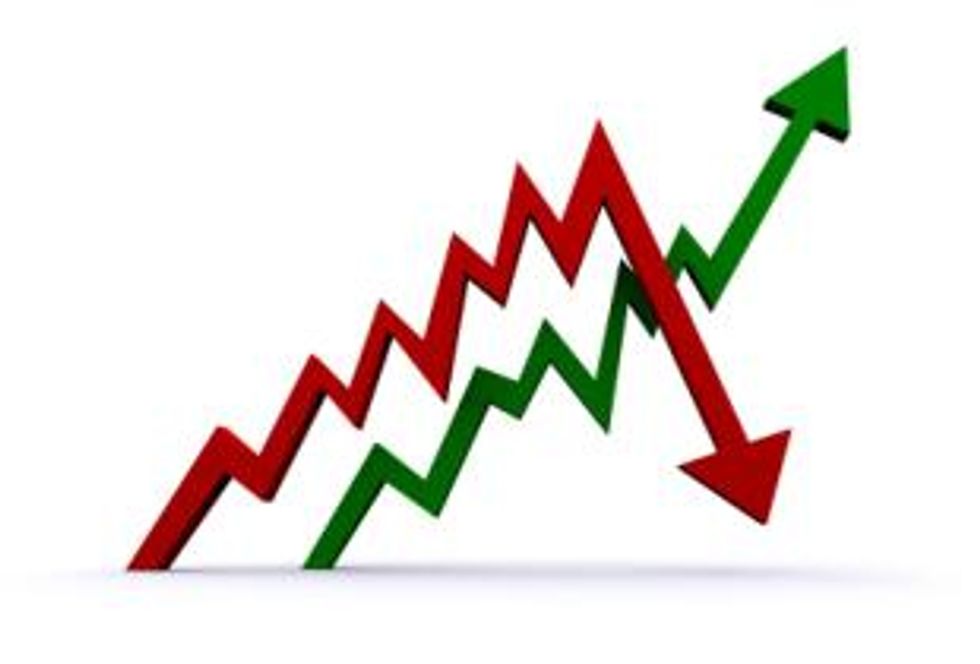The strengthening of the dollar and rumors of China tightening monetary policy has pushed gold prices down. Some see this as a beginning of a correction for a ‘bubble’ in the gold market, yet many analysts see a continuing positive climate for gold.
By Michael Montgomery—Exclusive to Gold Investing News
Last week, the gold price rallied to $1425 per ounce after World Bank President Robert Zoellick’s intimation about a partial return to a gold standard for international currency was taken wildly out of context, and the US Federal Reserve’s quantitative easing decision increased fears of inflation. Since then the price has receded significantly.On Tuesday, gold prices fell $21 dollars per ounce today down to 1340.40 from Monday’s close of $1360.50. Many factors are at play in the market currently. The strengthening of the US dollar and potential profit seeking sell offs of gold may have contributed to the fall in gold price. Inflation remains low, despite recent decisions by the Fed, contributing to the downward price for gold.
“The U.S. can’t seem to spur enough inflation despite the Federal Reserve’s $600 billion bond buying program. The core Producer Price Index, which measures prices on a wholesale level and is an inflation indicator, fell 0.6% in October,” reported Alix Steel, for The Street.
Raising margin requirements for gold purchases has also slowed gold buying. “The CME Group… late Monday raised margin requirements for its most popular gold, silver, platinum and palladium futures contracts, stated Claudia Assis, for MarketWatch. The increased margin requirements are a barrier for many individual investors looking to capitalize on gold’s meteoric rise.
The ongoing debt concerns in Europe also helped the dollar as it is rumored that Ireland will ask for 80 billion euros for a bailout, despite denials from Irish officials. Regardless of whether the country needs the 80 billion in funds, ongoing debt concerns in the country as well as from Greece and Portugal have held down the euro. Conversely, this may also help gold in the future, as debt concerns may drive investors to gold in Europe.
Another concern for investors and analysts alike is monetary policy in Asia. South Korea raised interest rates to curb inflation. There is also speculation that China might tighten monetary policy, curbing inflation as well as the country’s massive appetite for commodities.
“Rumors in China overnight that Chinese monetary authorities would soon tighten monetary policy and that the government could also move to rein commodity market speculation hit the Chinese stock and commodity markets hard,” stated Jim Wyckoff, for Kitco.
Gold bugs argue that, despite moves by China and South Korea to curb inflation, as well as a perceived bubble in the gold market, gold will continue to rise. The all time high for gold, adjusted for inflation, is $2400 per ounce. The argument is that real interest rates affect the gold price, and the real interest rates were negative in the bull market before 1980. The subsequent decline of gold was not realized until those rates were into the positive.
“When the dollar has value (positive interest rates), there is no reason for holders of dollars to own gold. This gold bear market continued from 1980-2000 as the dollar maintained value, discouraging the need for alternatives,” stated Nathaniel Crawford, for iStockanalyst.
The continuing high price of gold will most likely take all of these factors into account as the world has changed, the US, while still a superpower, is being challenged by China, and the collective power of the euro is a balance to the two. Continuing uncertainty in the world economy will continue to place high value on gold as a store of money, and as a hedge against inflation.






